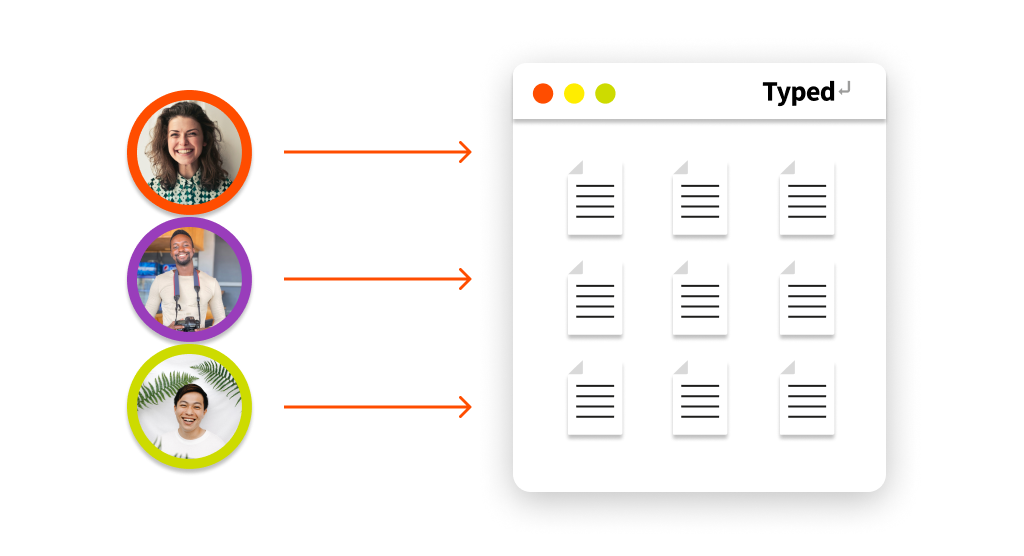If you’ve been working remotely over the last couple of years, there’s a good chance you’ve done asynchronous work. If so, you probably know how challenging it can be to coordinate your work with people who live in a different time zone, country, or even continent.
With increasing numbers of companies choosing to remain fully or partially remote in the post-pandemic world, asynchronous work has become a necessity — whether we like it or not.
Async work boosts productivity by decoupling work from synchronous communication. This contrasts with synchronous work, which is when all employees are expected to be online at the same time. This model is common in offices, but many remote teams use it, too.
Online document editors like Google Docs are one of the most vital tools for asynchronous teams. These platforms enable remote teams to carry out work, document processes and written procedures, and coordinate with teammates.
This article will cover the characteristics of asynchronous work and how a sophisticated document editor like Typed can make it more effective.
Characteristics of Asynchronous Work
Let’s start by looking at what differentiates asynchronous from synchronous work.
In synchronous work, colleagues use real-time communication, sending messages back and forth, and working in a collaboration-intensive manner that slows progress.
This is how in-person teams worked before the pandemic forced us into asynchronous and remote working environments. But even in an office environment, synchronous work isn’t necessarily the most efficient way to get things done.
In an asynchronous work model, a team member sends a notification, such as a task update or a message, to a common host or platform. This could be an instant messaging app like a Slack channel or a shared file like a Google Doc, where teammates can drop in and respond in their own time.
Messages and updates live on these communication tools pretty much forever (unless you reach your 10,000-message limit on Slack or the sender deletes the message), making asynchronous work a lot more flexible and suited to remote and hybrid work. Below are three of the main characteristics of asynchronous work.
Independent Collaboration
Asynchronous work ushers in a new kind of collaboration — one that doesn’t require team members to be physically present or online at the same time.
One coworker can ask a question and continue with other tasks until they receive a response. When they’ve finished for the day, they can assign the task to their teammate to take over when they can. This creates a culture of autonomy within a larger setting of collaboration and trust.
Working Across Different Time Zones
A natural byproduct of the independence offered by asynchronous work is the ability to work across time zones without needing an immediate response.
This is the key factor that makes asynchronous work so attractive to remote teams: employees can be on two opposite sides of the planet and still carry a project to completion.
However, they need one crucial practice to make that happen — super-efficient communication.
Transparent, Context-Driven Communication
Asynchronous workflows require open and transparent communication that retains all the crucial context required for another team member to pick up where the first left off.
Asynchronous communication is process-driven and requires establishing written procedures, using instant messaging over Zoom calls or face-to-face check-ins, and respecting time reserved for deep work.
This means team members need to consider the time-independent nature of asynchronous work during async communication, asking themselves questions like:
- What’s the best way to convey this message?
- Am I mindful of the tone of my message when I press send?
- Have I provided enough context and resources? Does the other person have everything they need?
- Can I document and store this conversation for future reference?
How an Elevated Document Editor Can Make Asynchronous Work More Effective
Document editors are one of the go-to collaboration tools for remote workers in startups, which are constantly producing everything from marketing materials to pitch decks and policy documents.
Since startup teams often work remotely, they usually favor online editors like Google Docs over old-school offline ones like Microsoft Word. Google Docs provides a cloud-based knowledge system that teams can access from anywhere, anytime.
While Google Docs has evolved over the years, some of its features still leave room for improvement. One example is the dreaded folder/subfolder system that can make it difficult to find what you’re looking for and slow down asynchronous work when colleagues have to wait for each other to come back online and help them locate the file.
Team Typed set out to solve this problem.
Typed is built around the central idea of a remotely communicating, asynchronously arranged startup team that needs documents to function but doesn’t want the delays that come with synchronous communication.
These teams need asynchronous work to be as context-charged, transparent, and effective as its synchronous counterpart. Typed integrates with Google Docs and adds some supercharged features that will take your asynchronous work to the next level. Here’s how.
Resource Library
Typed’s referencing abilities form the core of its asynchronous support. When you open a Typed workspace, you’ll see your Typed Inbox. Note that this is not a place to receive messages but rather a repository of all your resources.
A resource is a source, such as a website or document, that you use to populate your document and provide context to your text. The Resource Library and Resource Folders allow the document author to show team members where they got their information and how it fits into the broader context.
Your resources live in your Typed Inbox until and unless you decide to assign them to a particular doc. Alternatively, you can add resources directly to documents in your Typed workspace and save them in your Resource Library.
When you open a new document, you’ll see the Resource Library on the left-hand side. Here, you can add resources — such as URLs or PDFs — and assign them to that specific document. When you share your document with a team member, they’ll be able to see and refer to all your references.
Two handy Typed features make adding References to your library easy and lightning-fast: the ‘Web Clipper’ — a browser extension which saves URLs into the Resource Library in just one click — and ‘Highlight’, which allows you to save the relevant part of a text to your Resource Library.
Review Requests
Working on a shared document asynchronously requires the ability to request input from your colleagues. With Typed’s ‘Review Request’ feature, you can assign your document to a coworker to review at their convenience.
When requesting a review, you have three options to let your teammates know what’s expected of them. Reviewers can edit, comment, or simply view the document for their own reference.
Task Management
The ‘Tasks’ feature was designed with asynchronous collaboration in mind. Use it to assign tasks, set deadlines, and track progress — all without leaving the document editor.
To assign a task to a coworker, click on the Tasks button at the top right of your document to open the task manager bar. Create the task, assign it to the appropriate person using their email address, and set the deadline.
You can set notifications to appear in the document or their Google Calendar. You can also use Tasks to set reminders for yourself and stay on the ball with all your projects.
Optimize Asynchronous Teamwork with Typed
The future of work is remote, and distributed teams that adapt to the asynchronous work model will see the greatest benefits.
Async work boosts productivity and empowers your team members by giving them the freedom to manage their workday in the way that makes sense for them.
This can improve their work-life balance, decrease burnout, and create a more engaged and efficient team.
But to be effective, working asynchronously requires the right tech stack — and one tool that can supercharge asynchronous work is Typed.
Typed improves the workflows and productivity of asynchronous teams through its streamlined knowledge management and superior document editing capabilities. Sign up for a free account and start Typing today.



